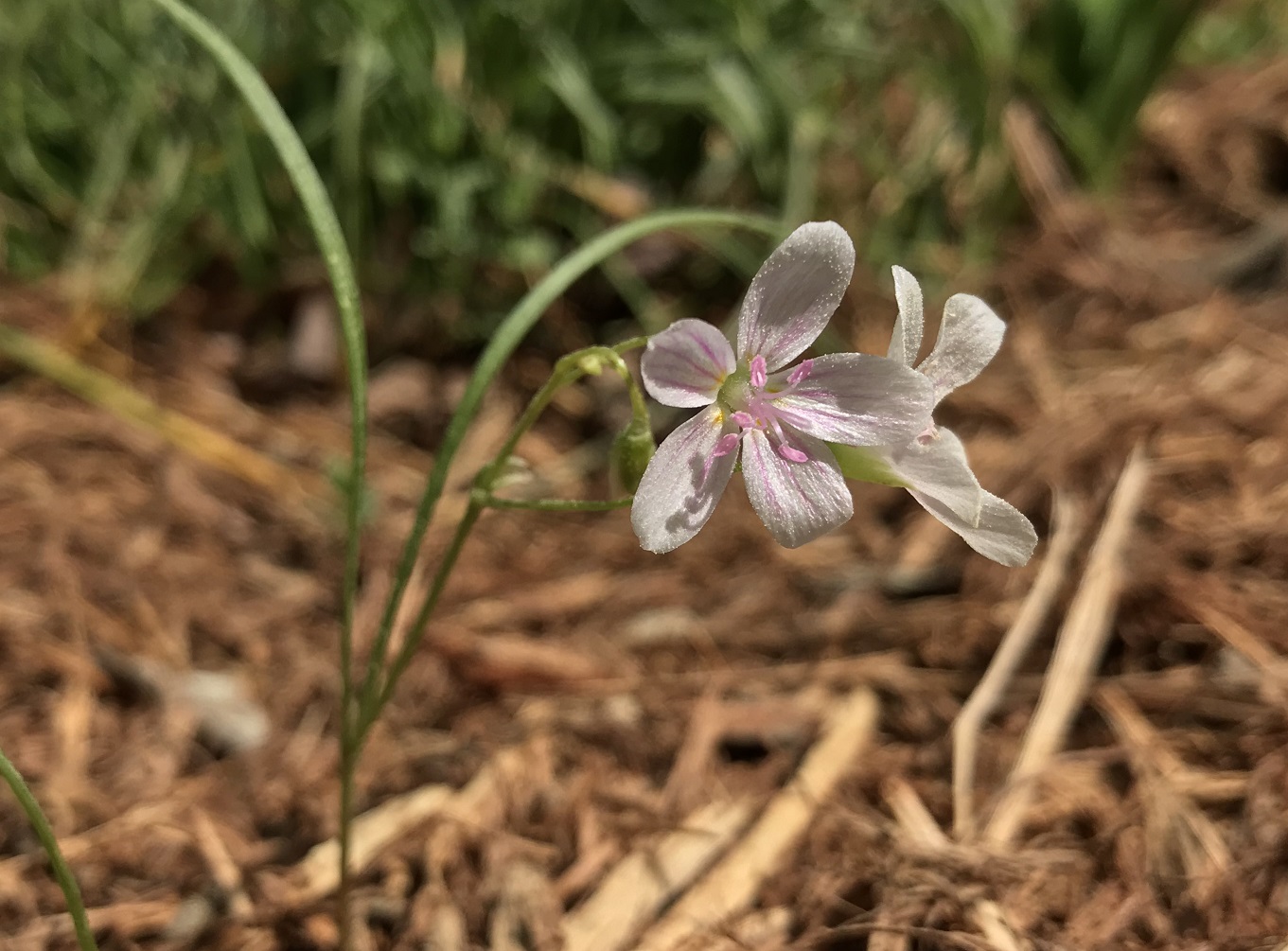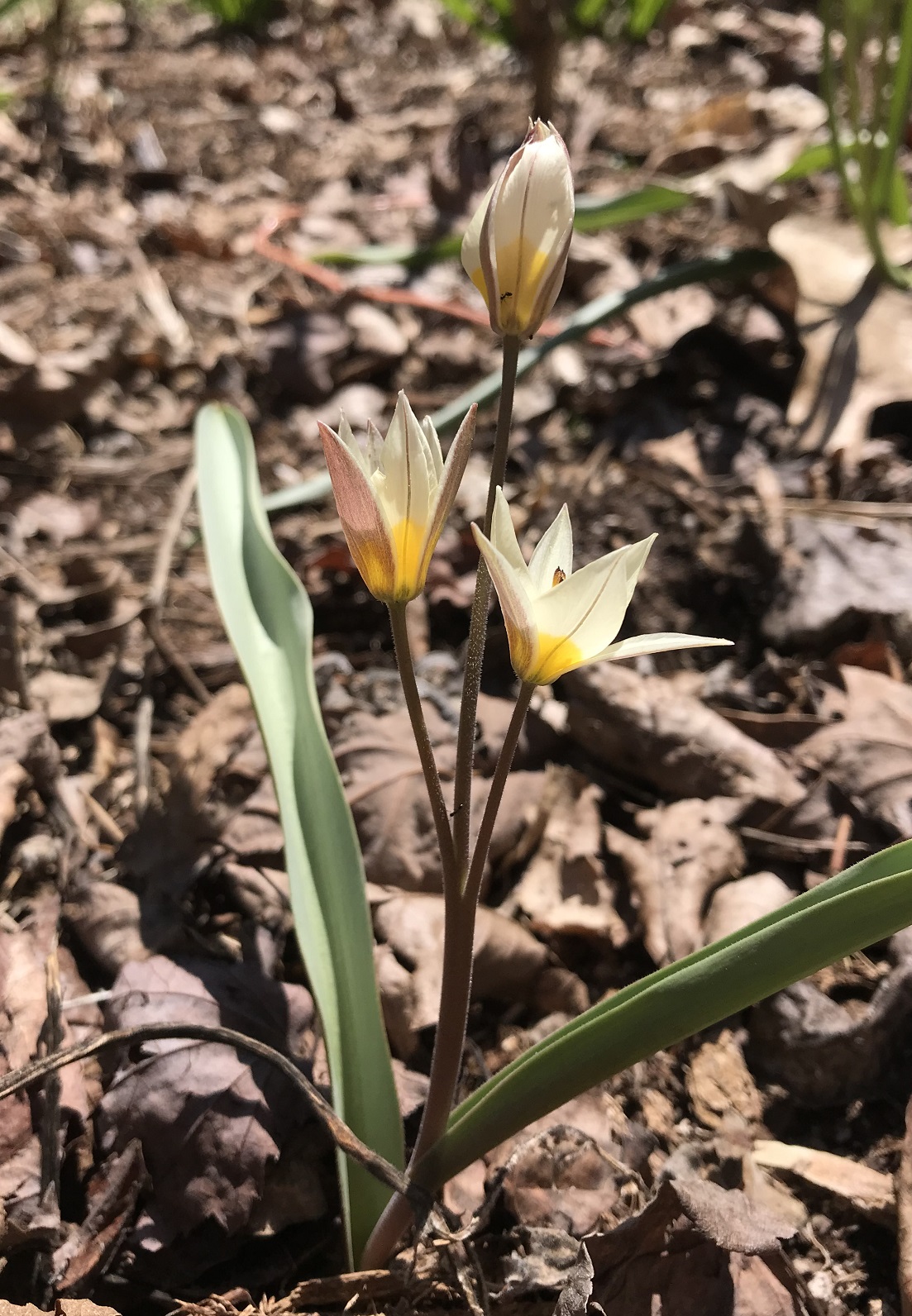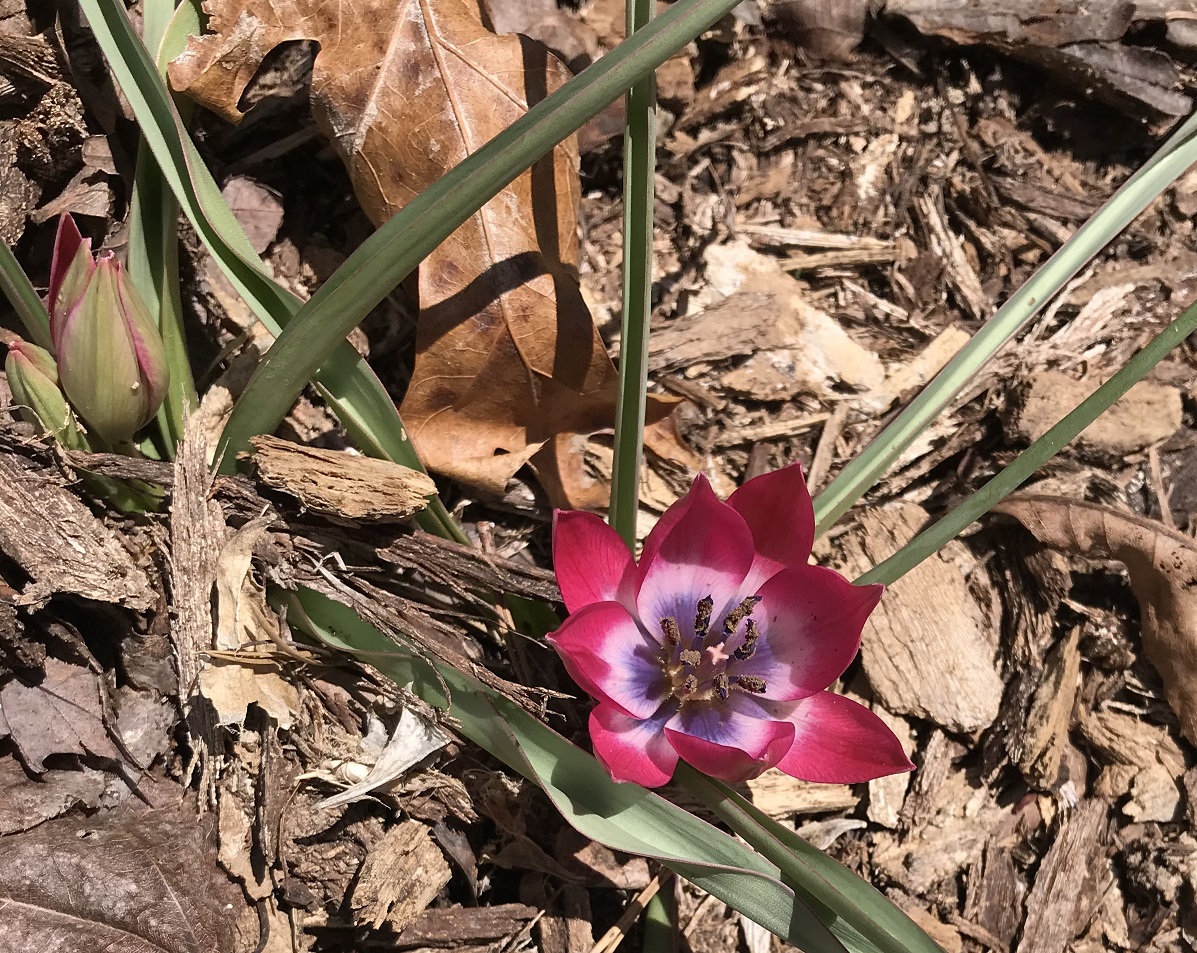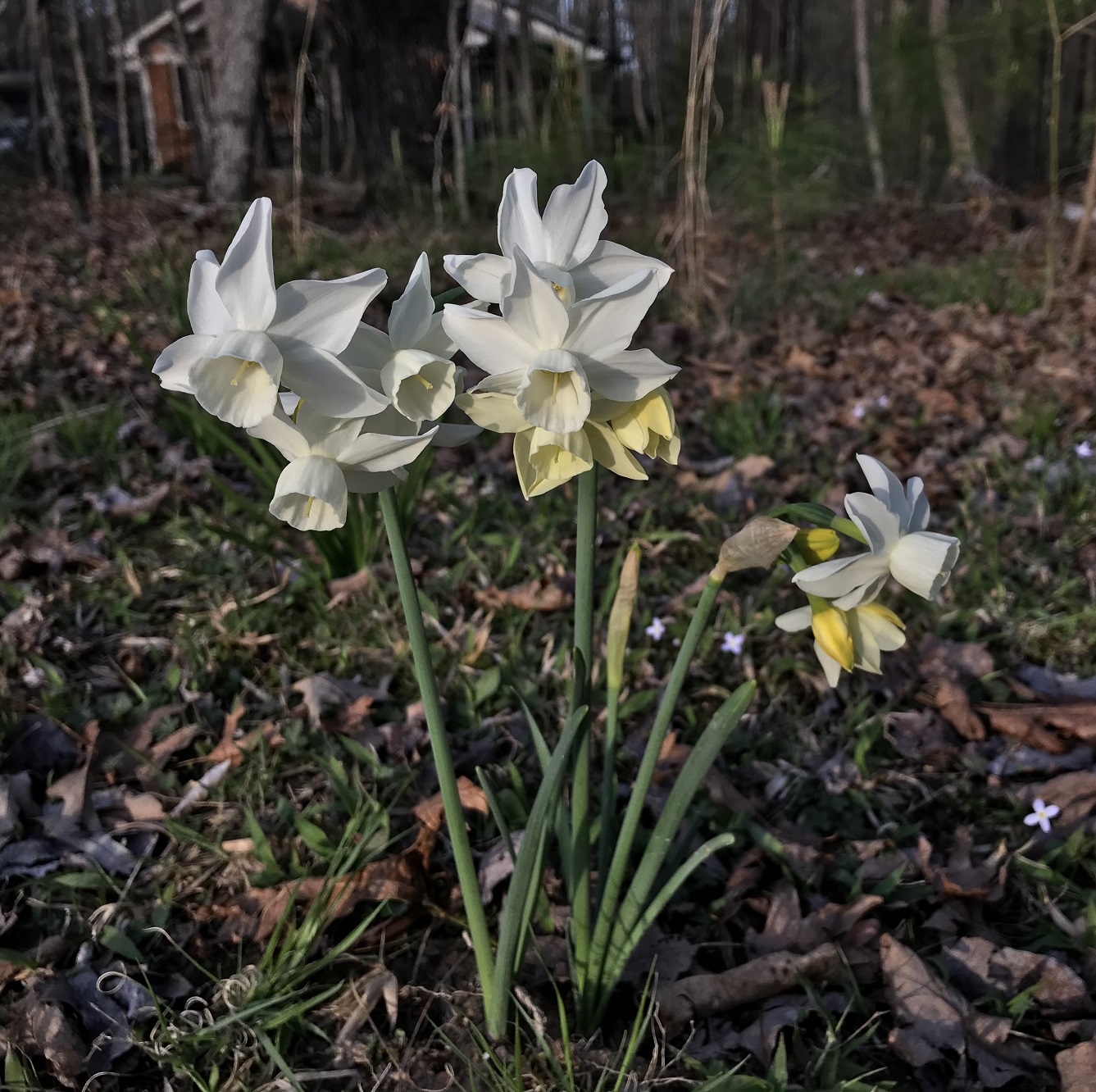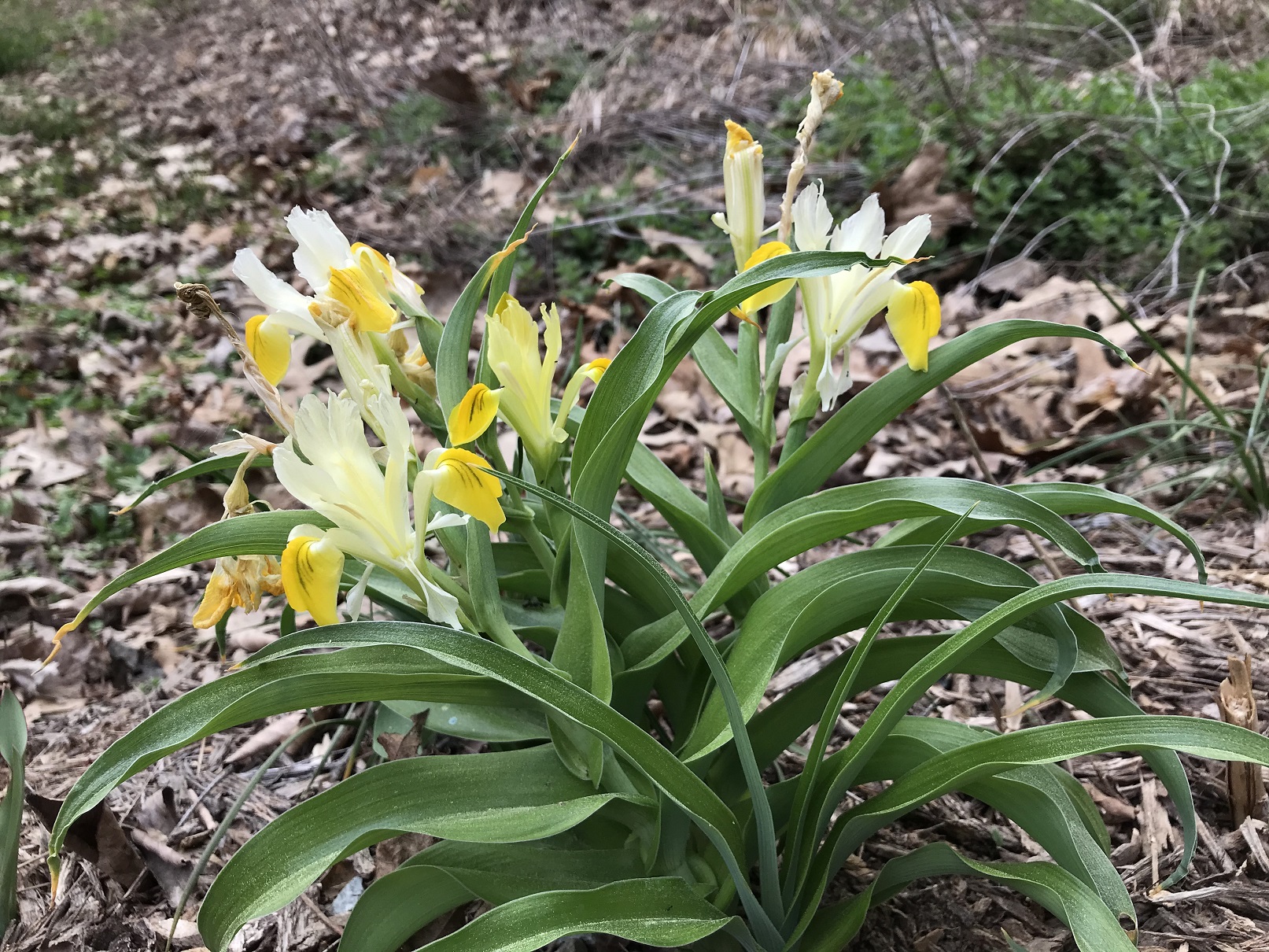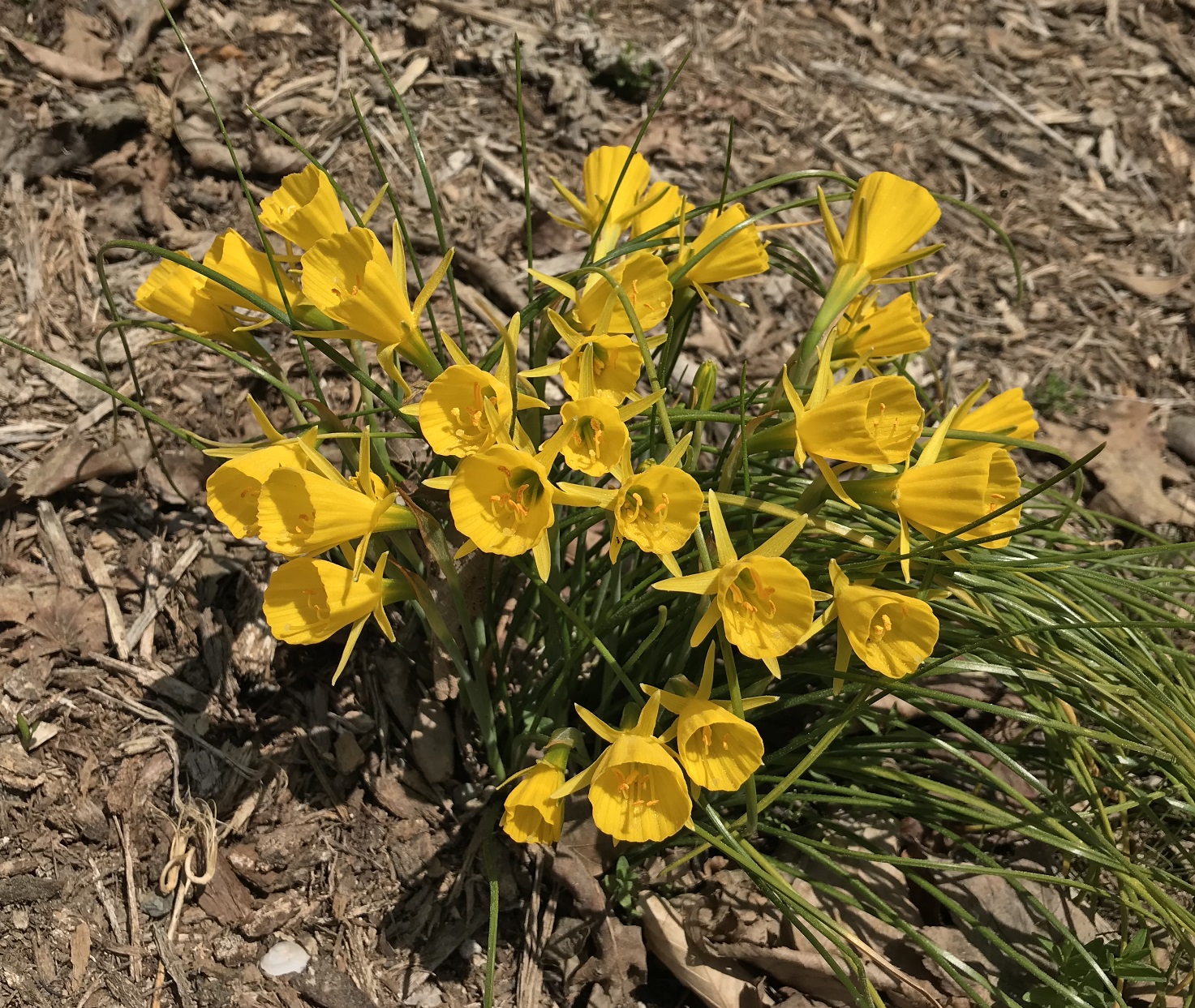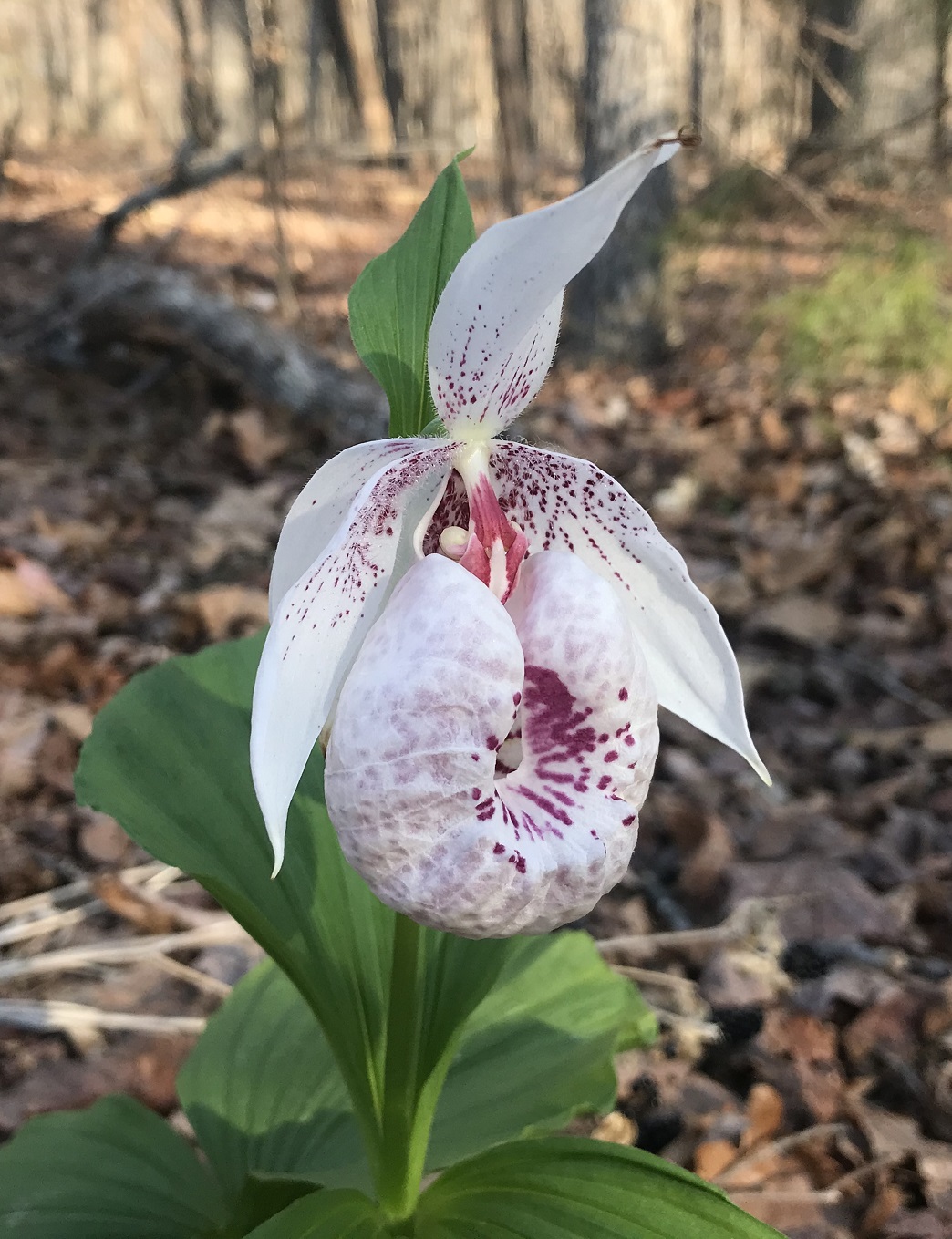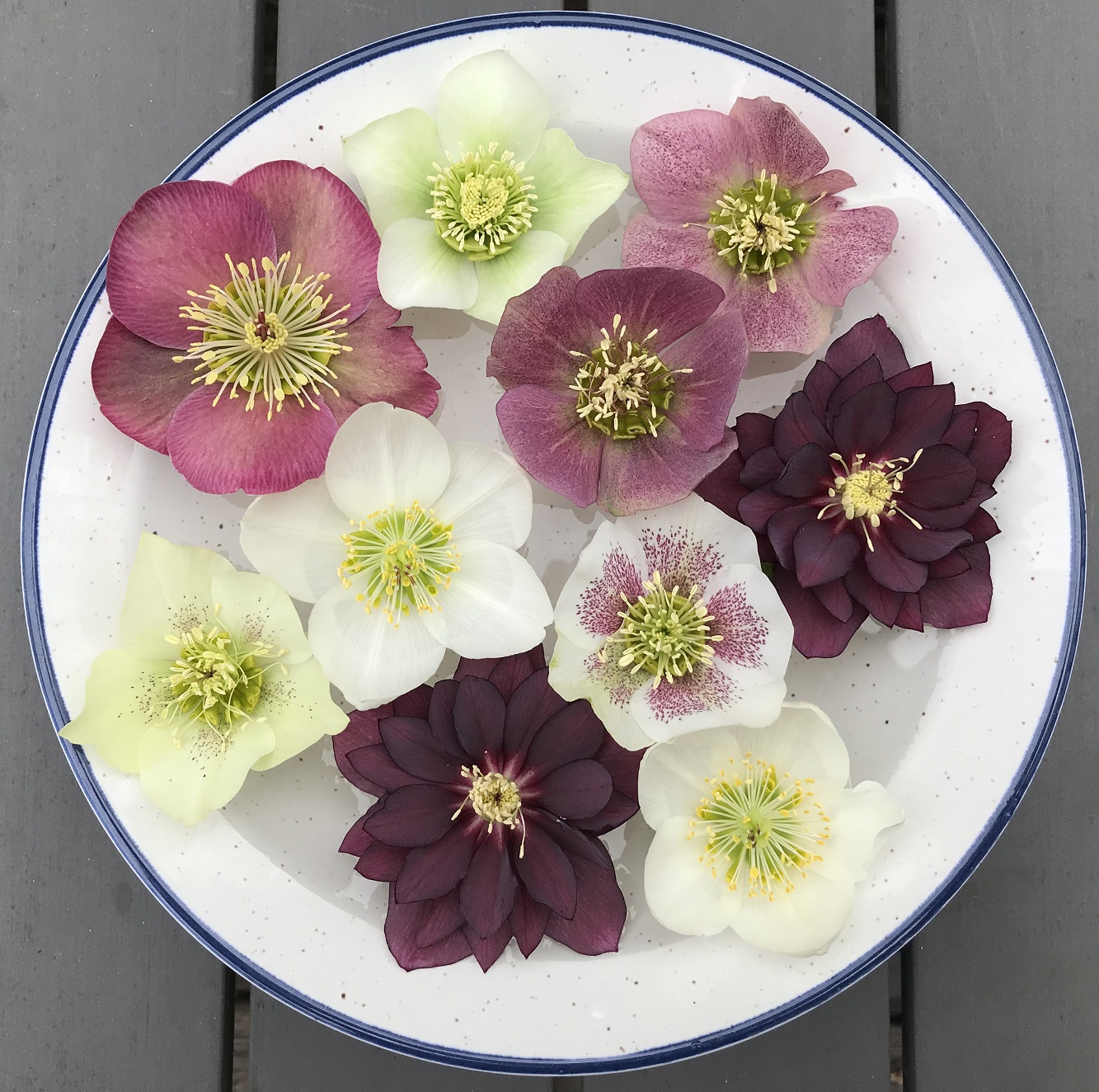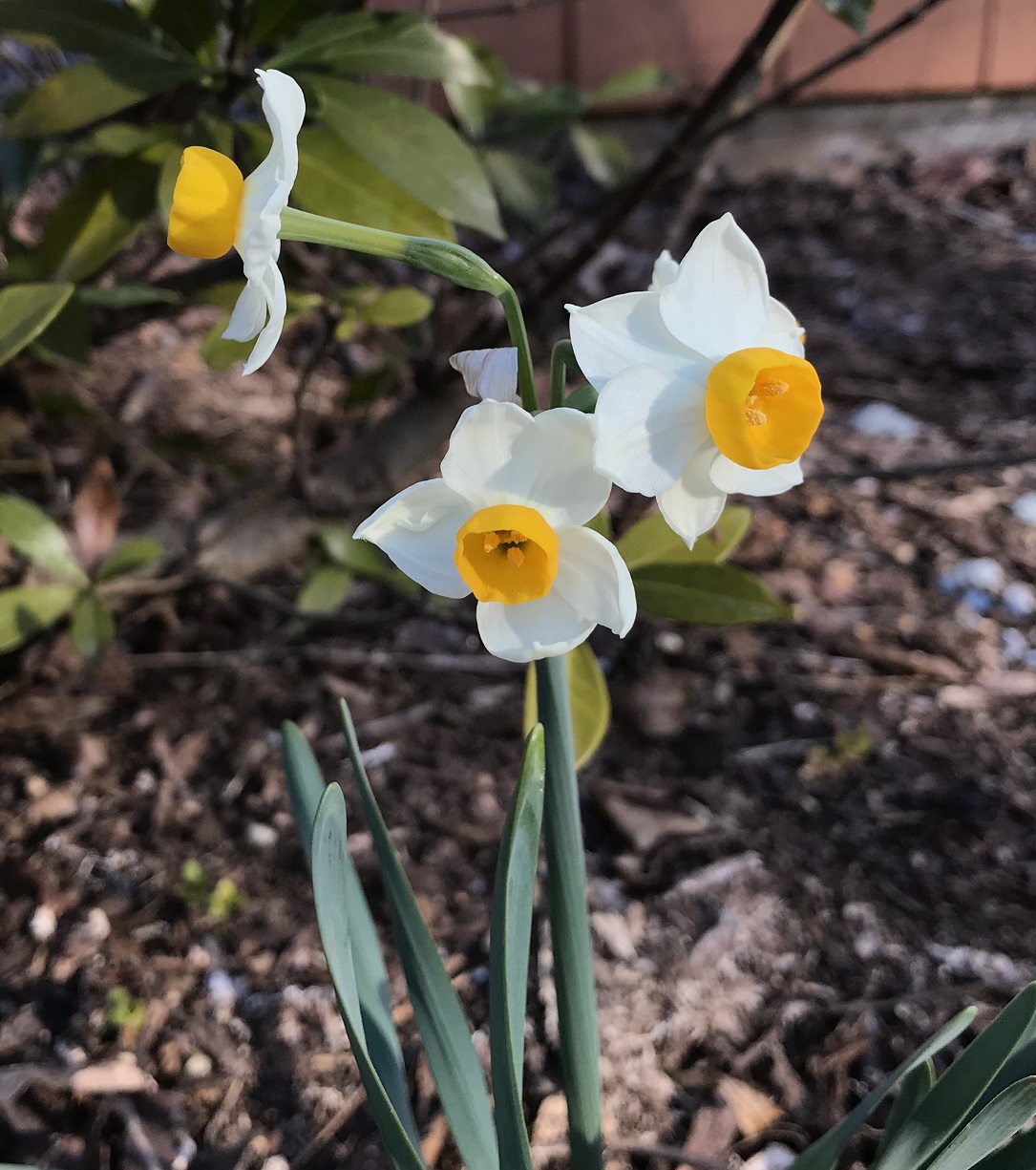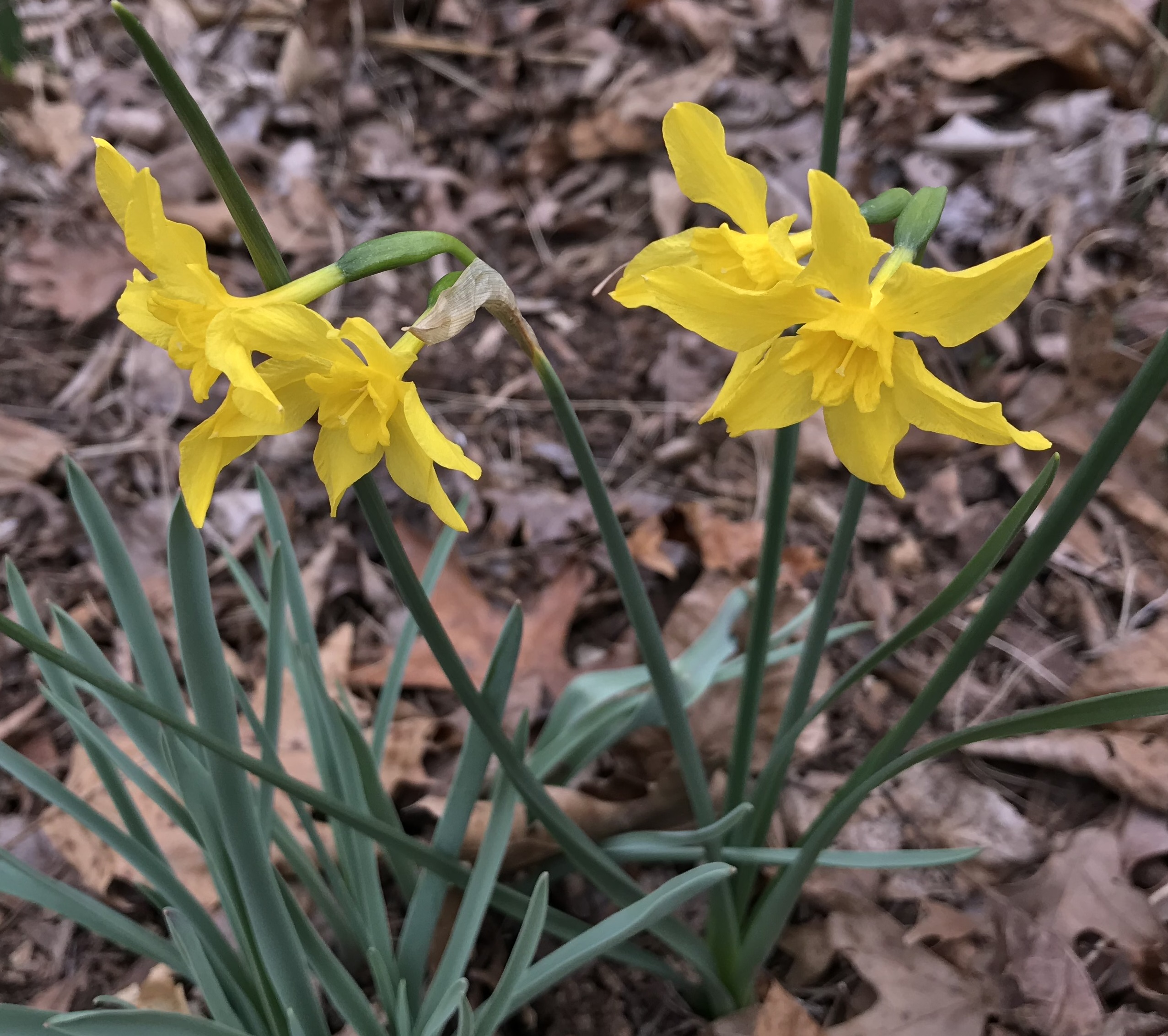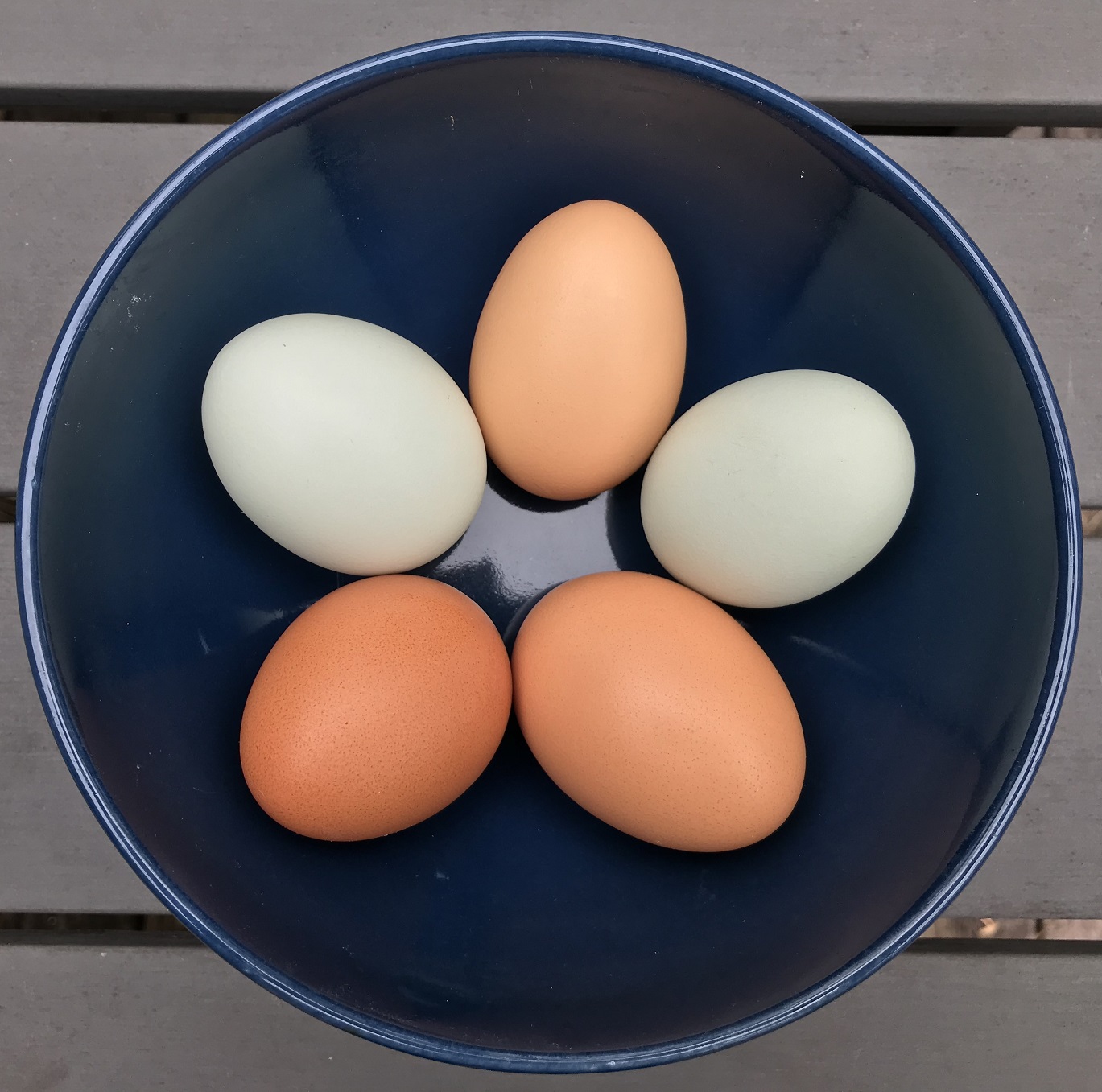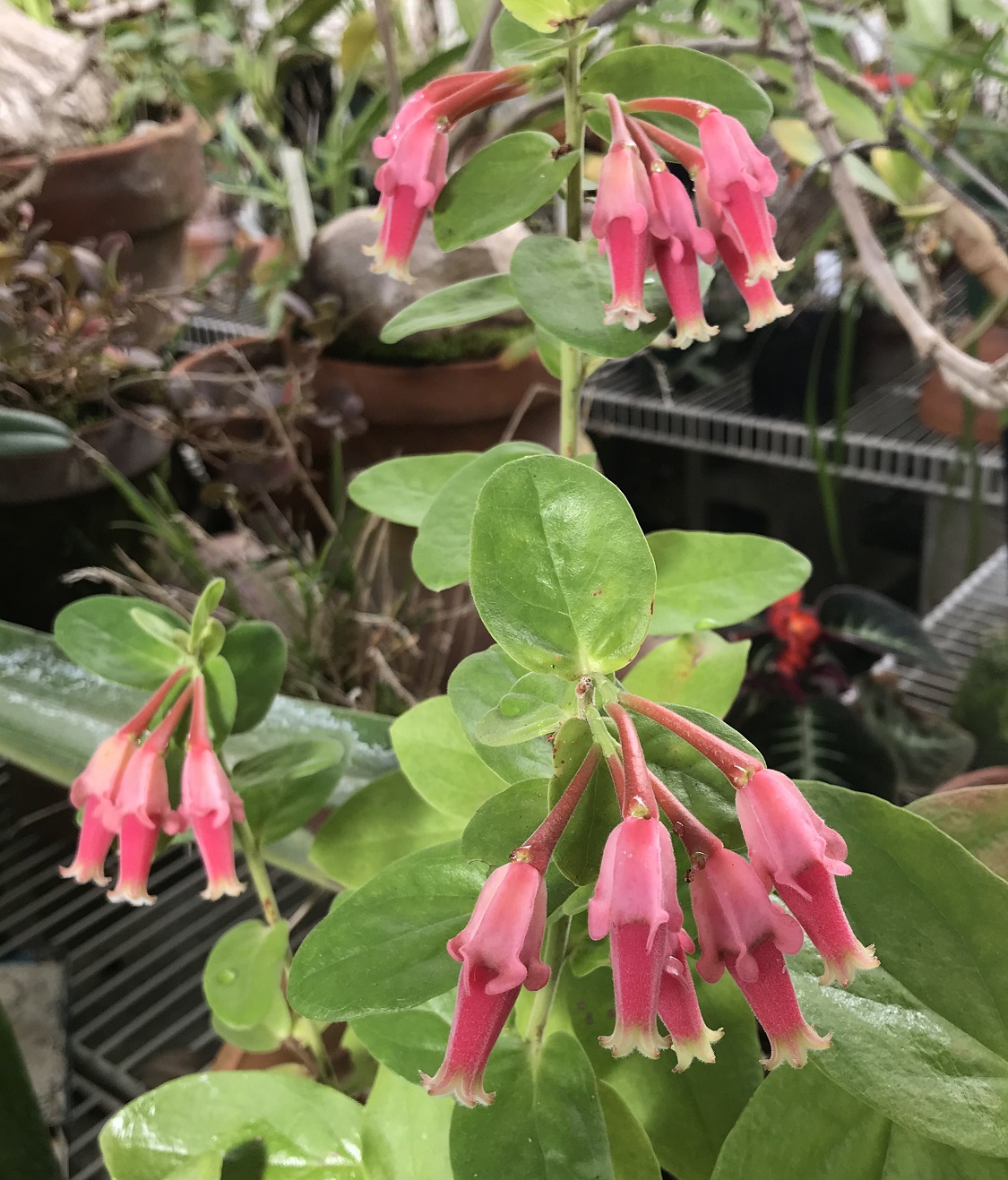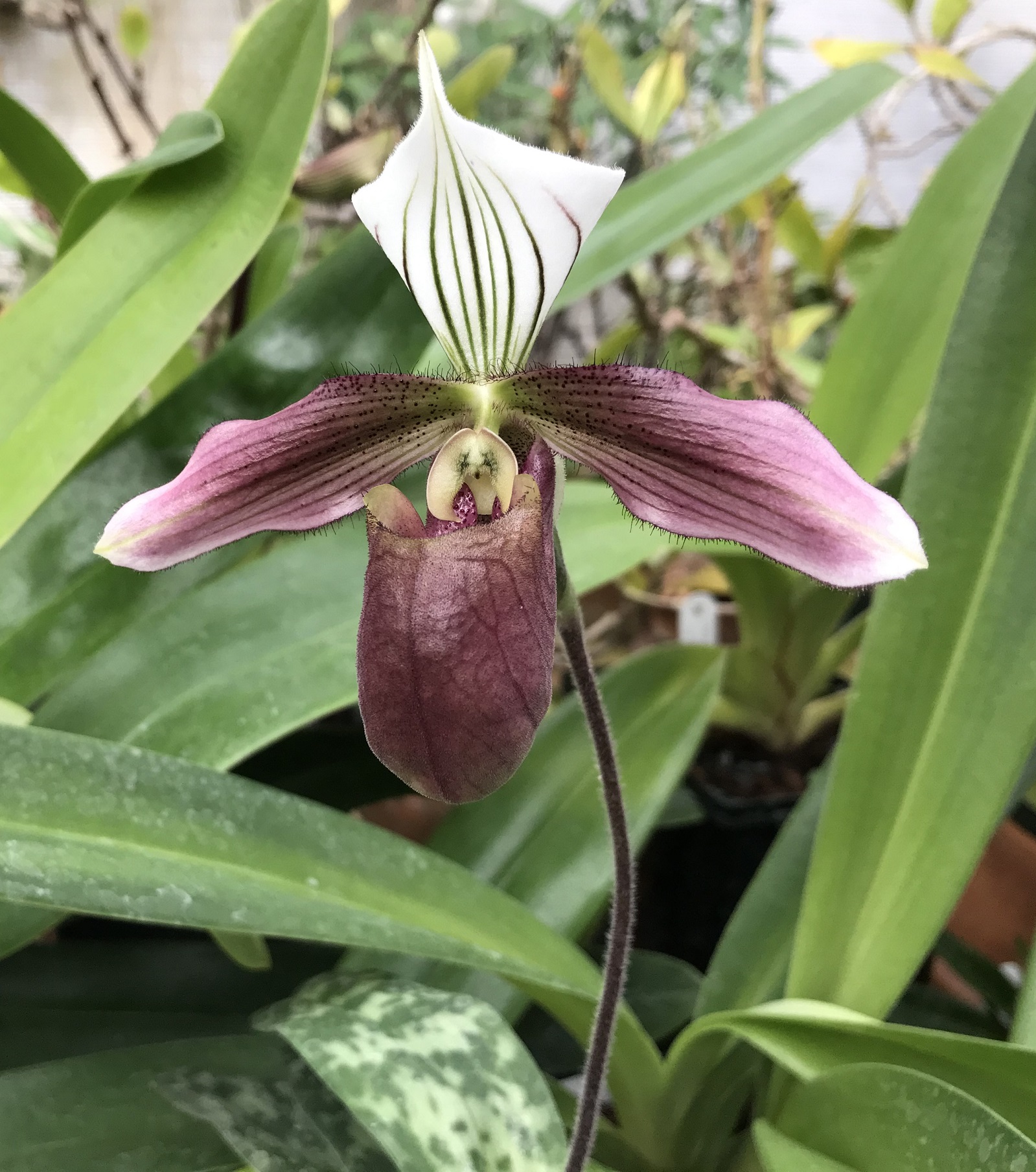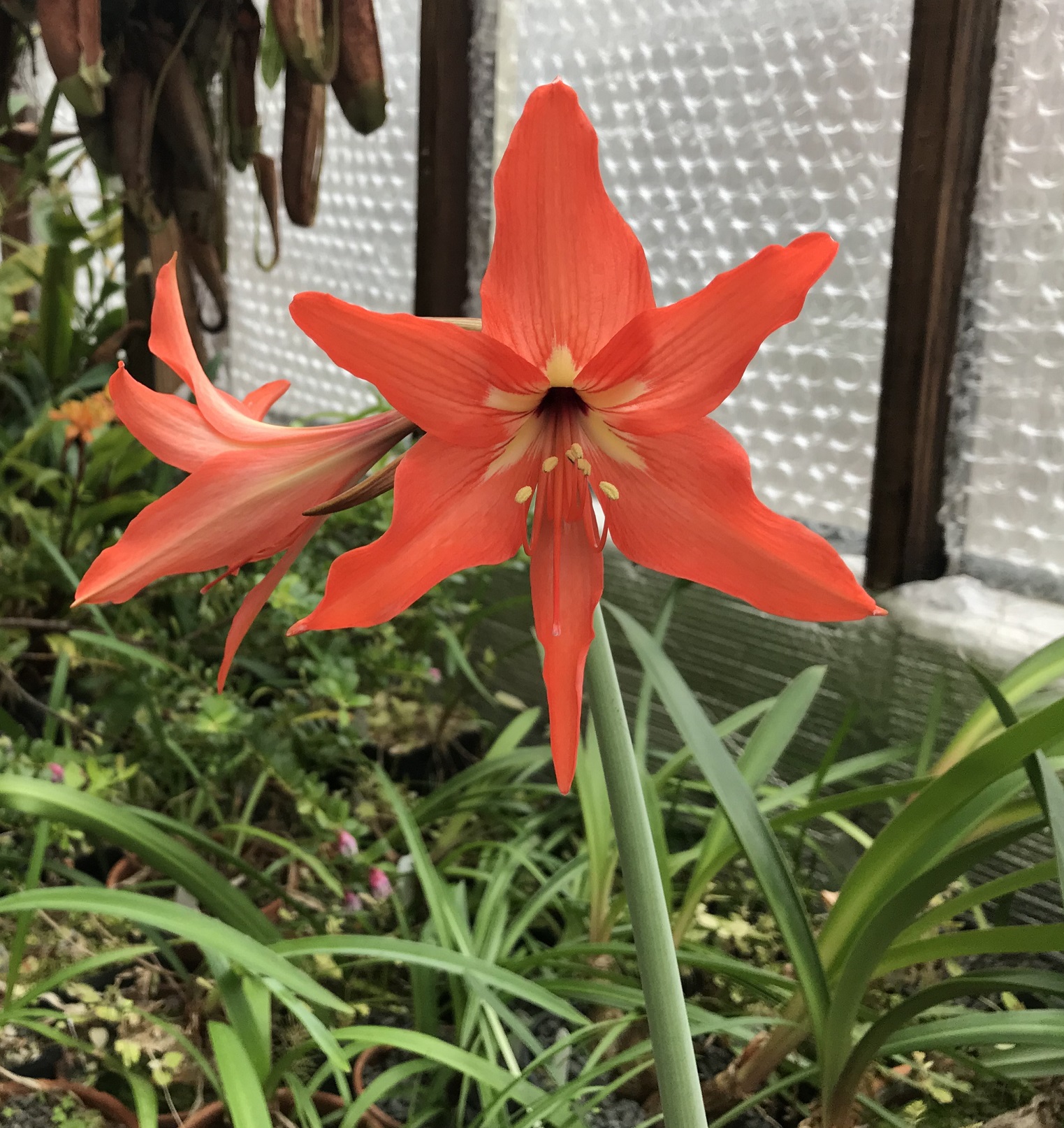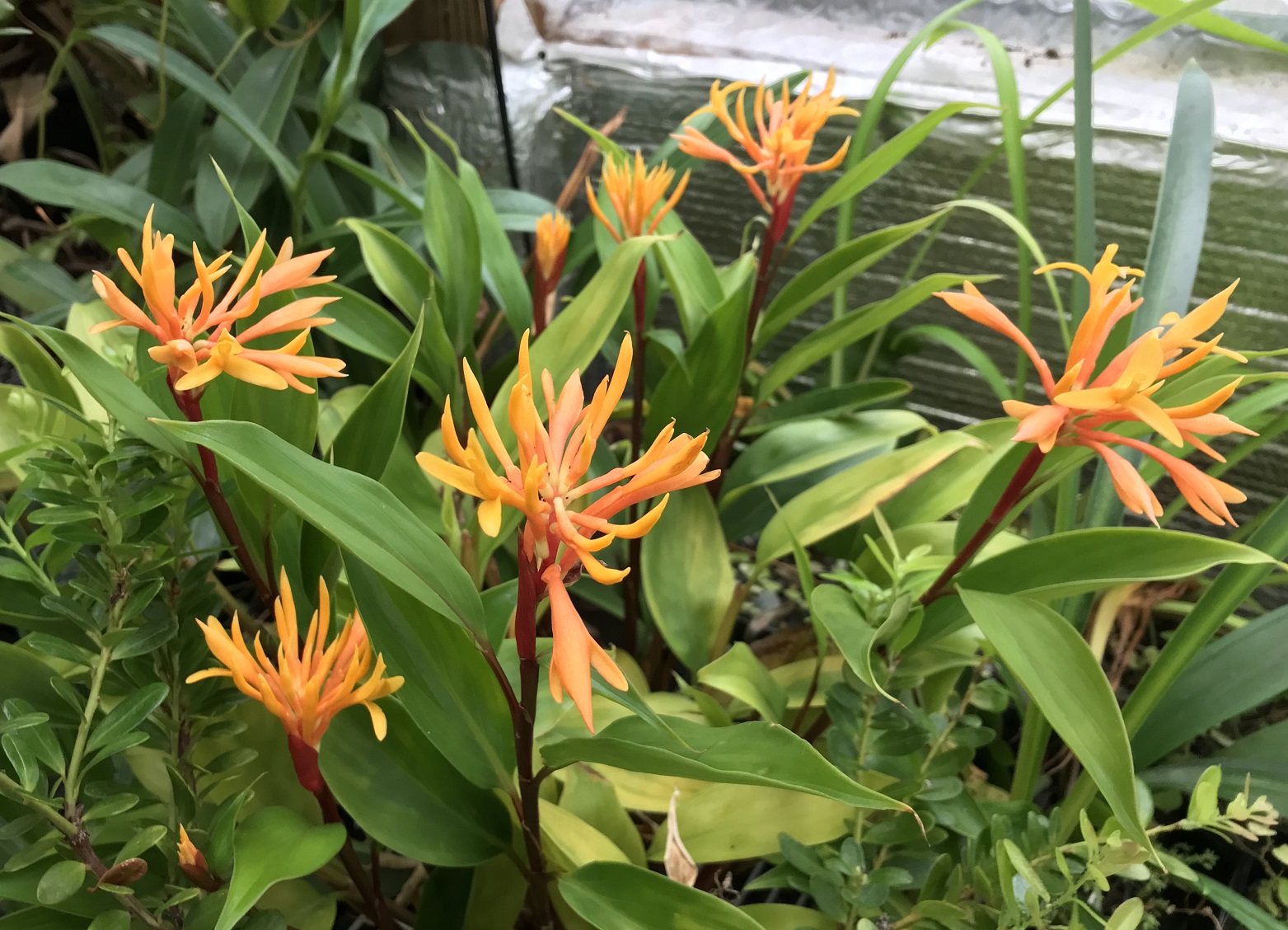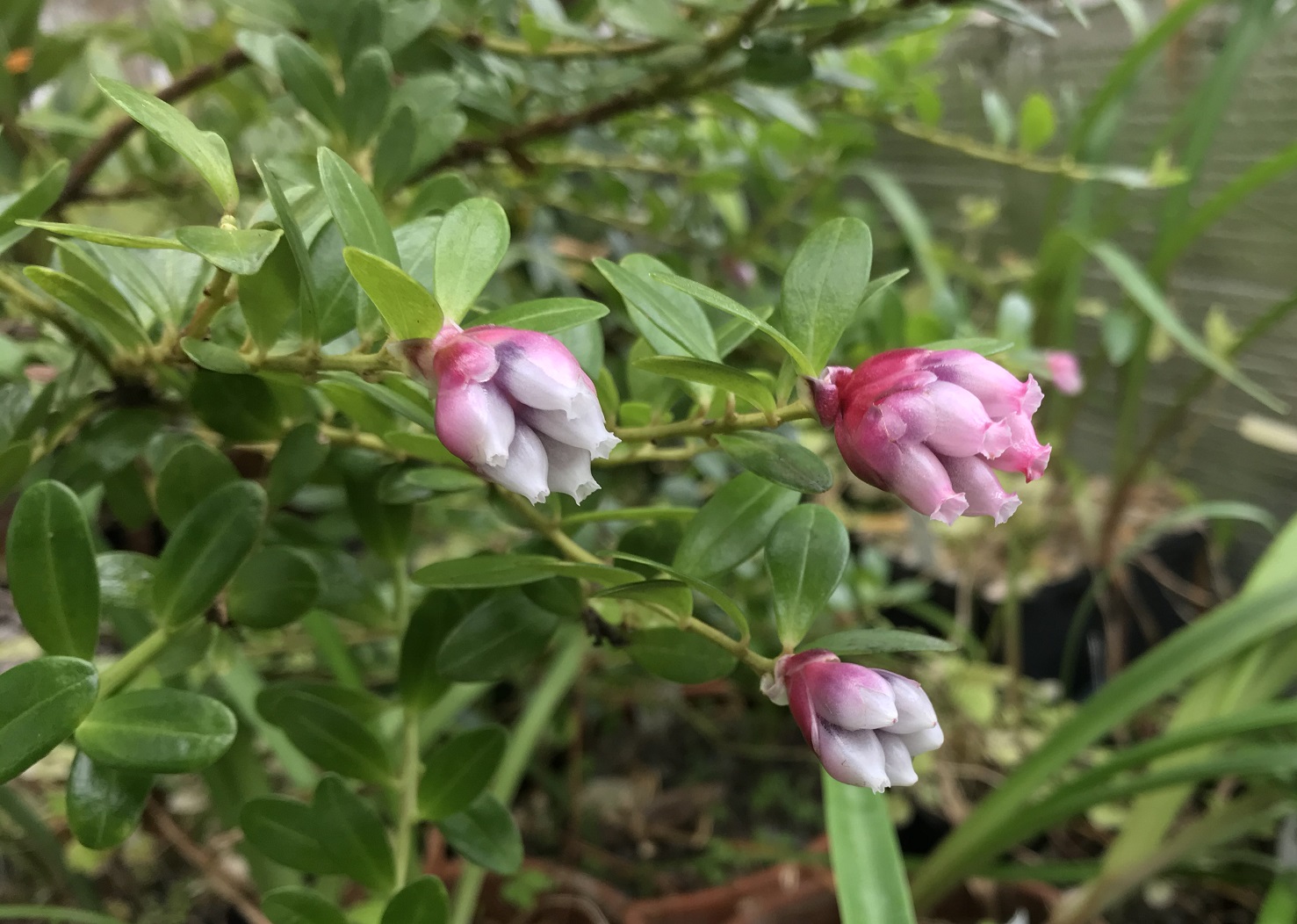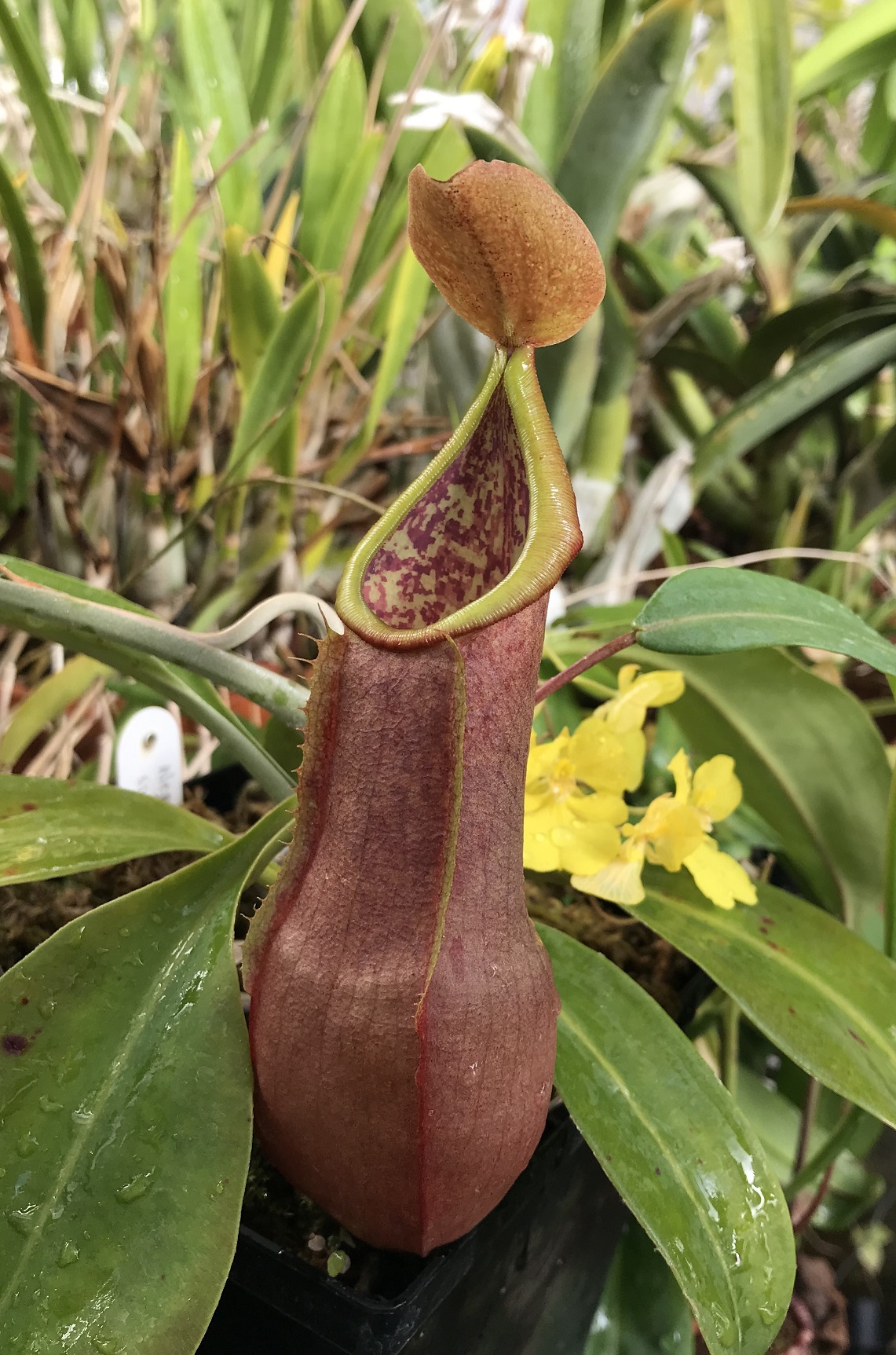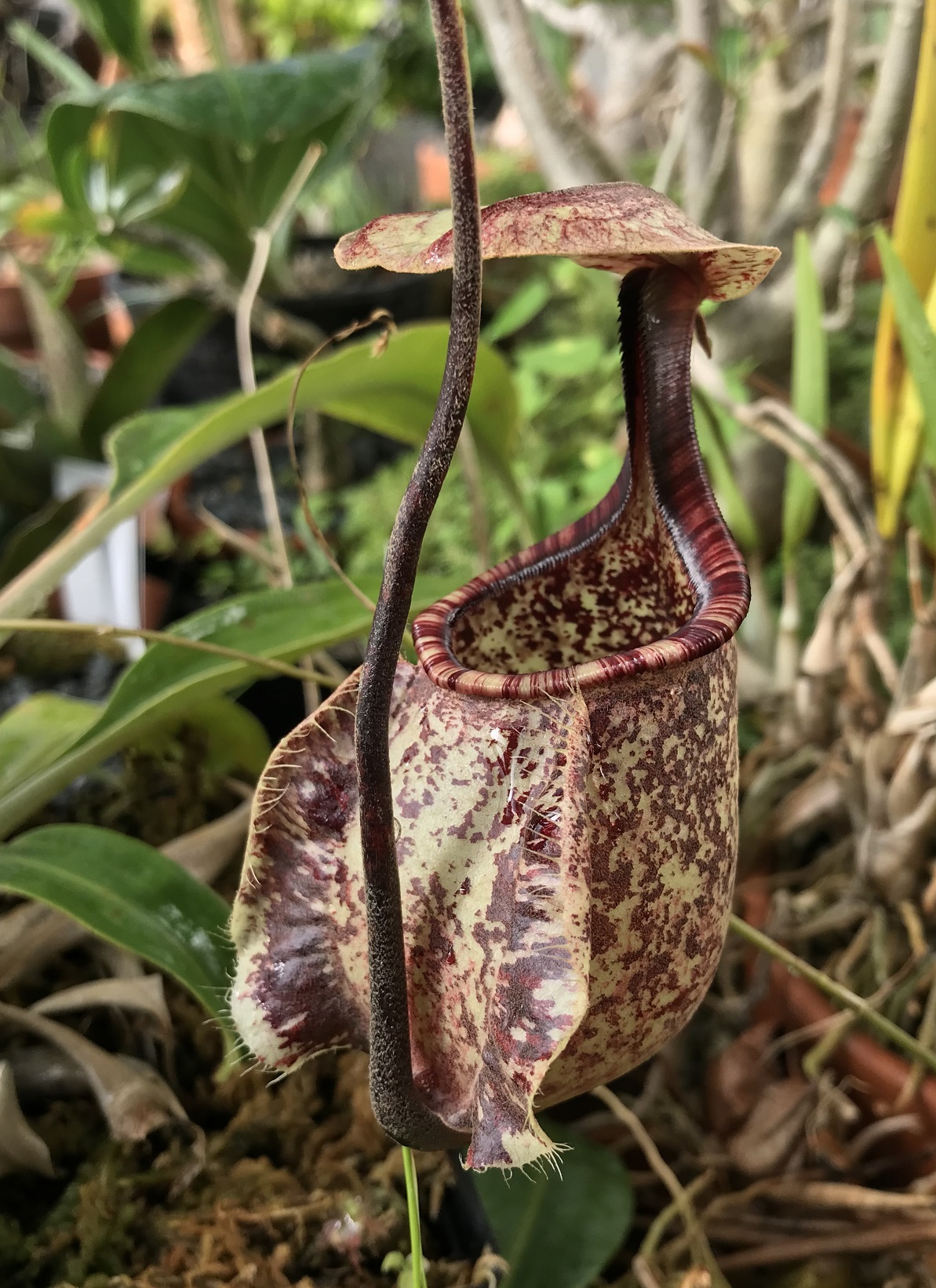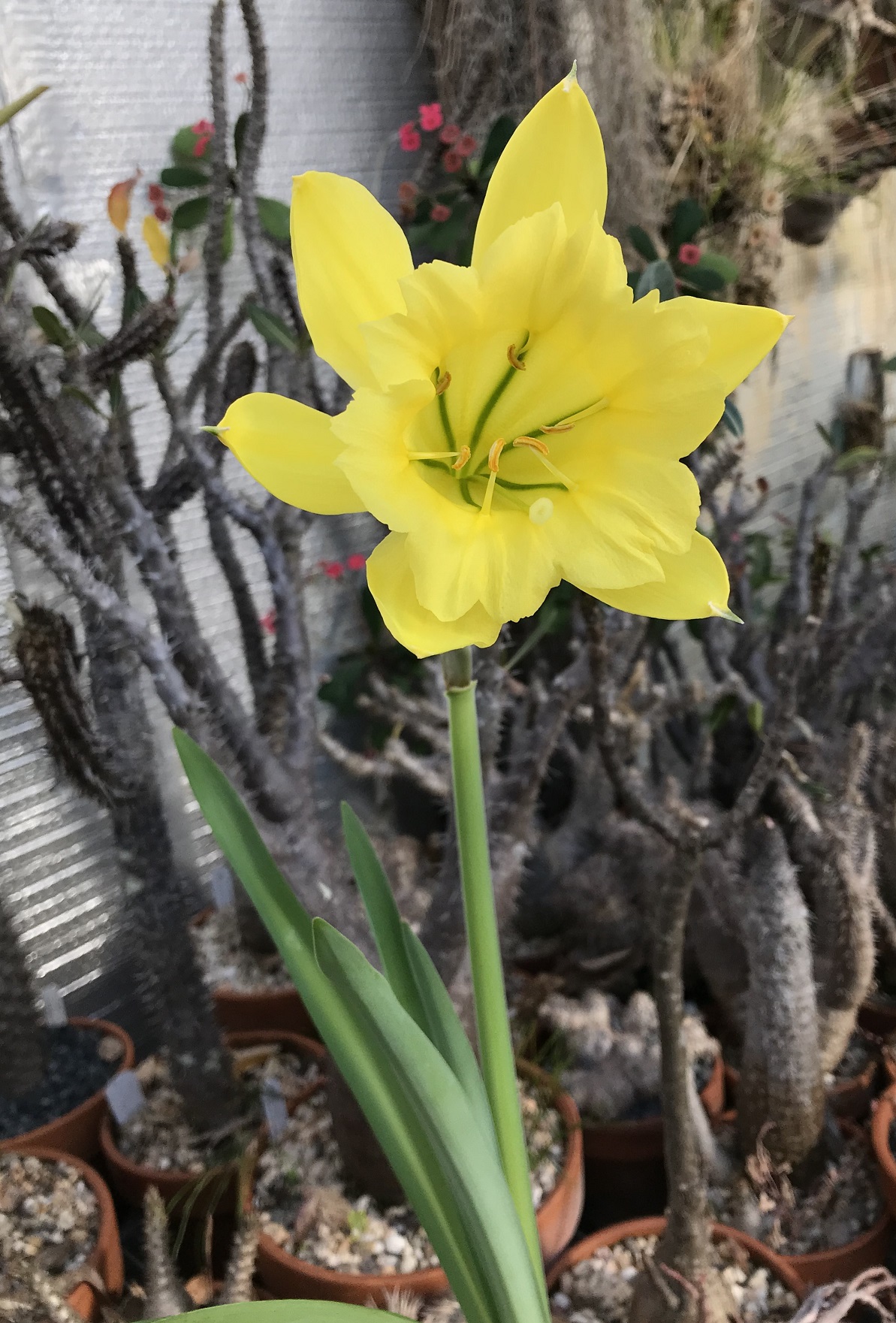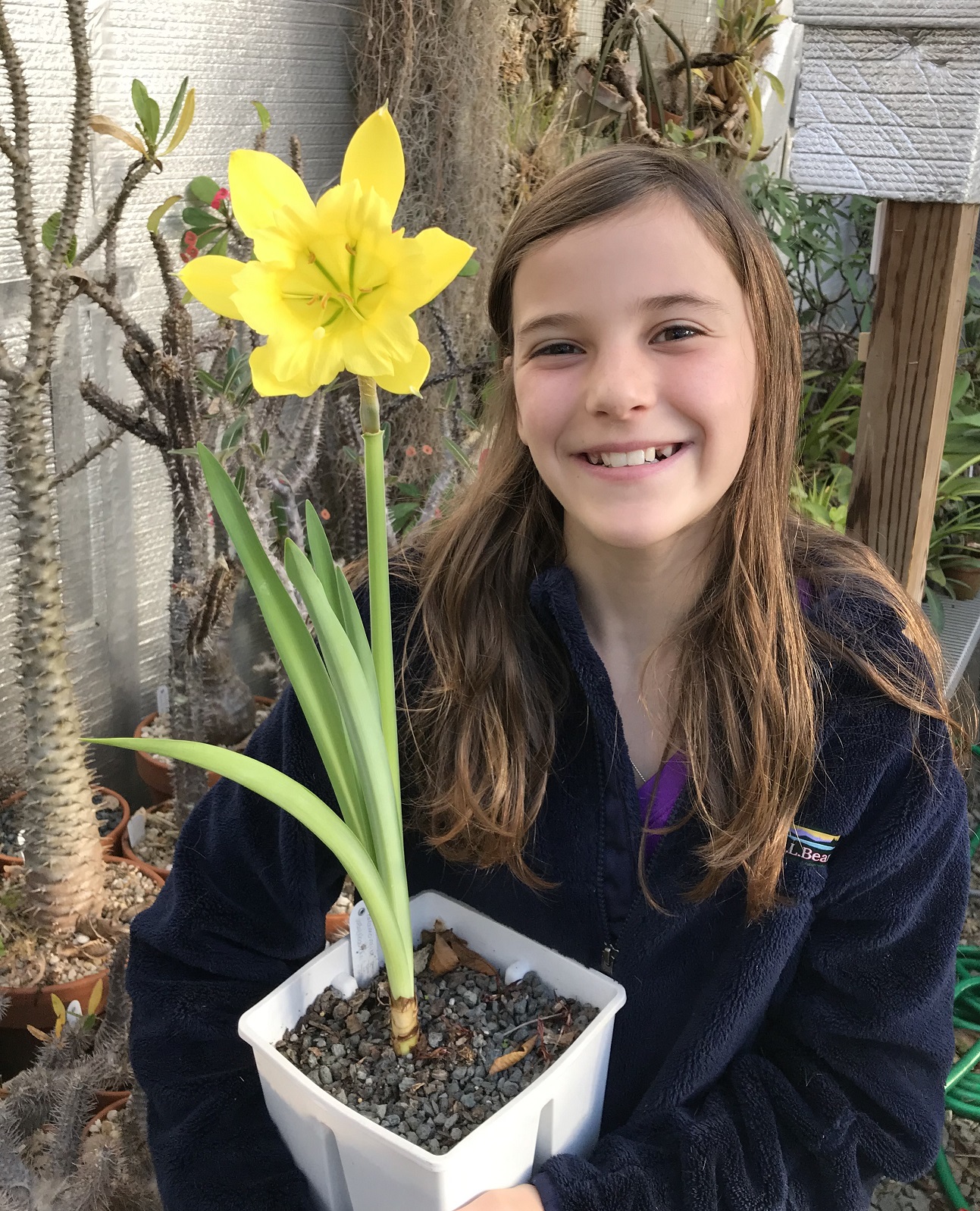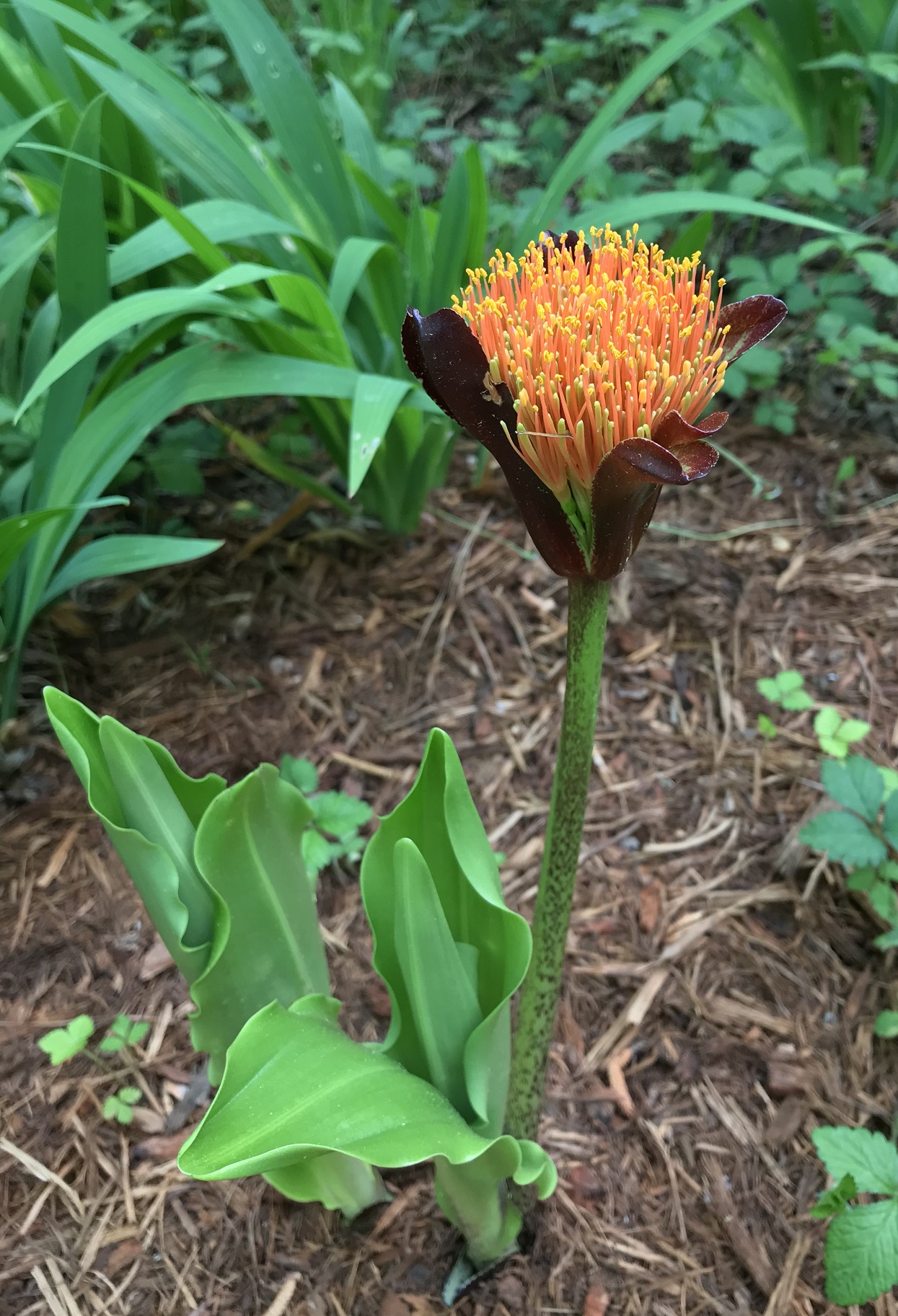
This is exciting! After about six years in the ground, my Scadoxus puniceus has finally decided to flower. I was afraid that I wouldn’t get it to see it in full bloom: The day after I noticed a bud emerging from the mulch, the temperature dropped to 28 F (-2.2 C), so I surrounded it with bubble-wrap and covered it with a large plastic pot. That seemed to be sufficient insulation, because a couple of weeks later I have this beautiful orange inflorescence. The many small flowers are surrounded by petal-like spathes, giving it the appearance of a large single bloom.
Scadoxus puniceus is an African member of the Amaryllidaceae, the daffodil family, so it is not a true lily. Its range in the wild extends from Western Cape Province in South Africa northwards to Tanzania, with disjunct populations in Ethiopia [1}. Given its tropical and subtropical native habitat, it is somewhat surprising that it has done so well in my garden. It has survived temperatures as low as 5.5 F (-14.7 C) when buried under a thick layer of mulch, and despite its reported preference for a dry winter dormancy, it grows in clay that stays wet all winter long.
I suspect it took so long to flower because it is heavily shaded in summer by a large American beautyberry bush (Callicarpa americana). Last year, I planted a couple of young plants in sunnier spots. They survived the winter but are still too small to flower. Maybe next year.
Reference
1. Duncan, G., Jeppe, B., and Voight, L. (2016) The Amaryllidaceae of Southern Africa, Umdaus Press, Pretoria, South Africa.

